
views
Applying Foundation
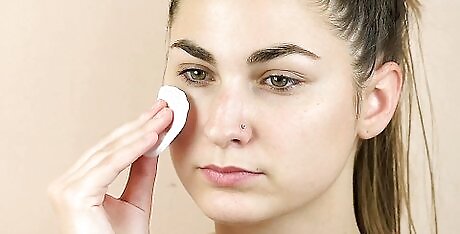
Start with a clean face, then apply some toner and moisturizer. Apply the toner first using a cotton ball, and the moisturizer using your fingers. The toner will help balance the pH of your skin. It will also help tighten pores and make them less noticeable. The moisturizer will help keep your skin feeling smooth and soft. It will also help prevent foundation (especially powder-based ones) from looking flaky. If you have very sensitive skin, try using a rosewater-based toner, witch hazel, or an alcohol-free toner. This will make it sting less. If you have oily skin, consider using a lightweight or an oil-free moisturizer. You can also apply eye cream at this point, too.
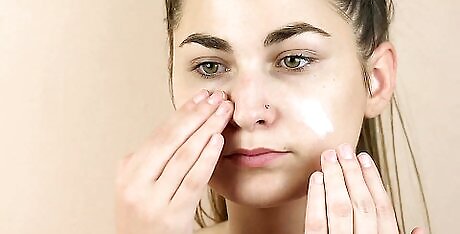
Consider applying some primer to your face. You don't need a lot; a little bit goes a long way. Primer will help fill in large pores and fine lines. This will make your skin appear smoother. It will also make the foundation easier to apply and blend in. Choose a primer that matches the base of your foundation (water or silicone). Also, choose a product that works best with your skin type (hydrating or mattifying).
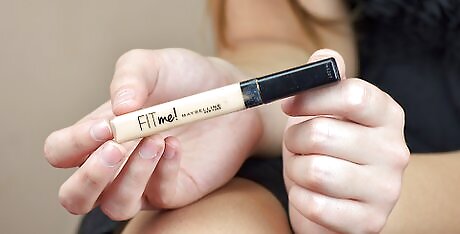
Apply concealer now if you are using a cream-to-powder type of foundation. This will help prevent any blending issues. Keep in mind, however, that the foundation may also wipe away the concealer. If you are using any other type of foundation, hold off on the concealer for now. Apply the concealer after you put on the foundation for the best coverage.

Get out a powder brush or a foam makeup sponge if you are using powder foundation. If the foundation is pressed, sweep a makeup sponge across it. You can also swirl a powder brush across it. If the foundation is loose, lightly dip the brush into the powder. Gently tap the handle against the counter to shake away extra powder. Do not use the makeup sponge to apply loose powder. Powder foundation is a great option for touch-ups if you're wearing makeup in humid weather.
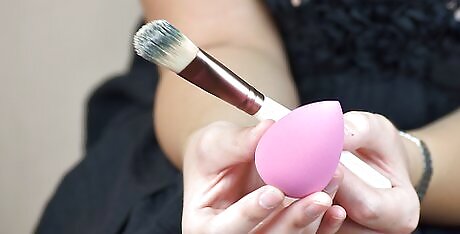
Get out a foam makeup sponge or a foundation brush if you are using liquid foundation. Shake the bottle first. This will help mix up the pigments inside the foundation. Then, pour out some foundation onto the back of your hand or onto a little dish. This will help prevent you from accidentally picking up too much foundation. If you are using a makeup sponge, consider soaking the sponge in water first and then squeezing it to get rid of the excess water. This will keep the sponge from soaking up too much foundation and wasting it. Avoid using a powder brush with soft bristles. Try to get a foundation brush. It will have stiffer bristles that can hold the weight of the liquid foundation. You can also apply liquid foundation if you are in hurry. Use your fingers to help blend the foundation, as the heat from your fingers will warm the foundation and give you a smoother appearance. This will not give you full coverage, but it will give a nice, natural look.
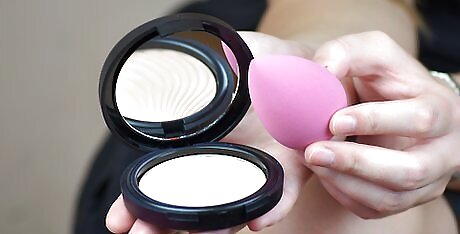
Get out a foam makeup sponge or a foundation brush if you are going to apply cream foundation. Cream foundation usually comes in a compact case. It may also come in a tube, sort of like lipstick. Simply swipe the sponge or brush across the surface of the foundation. If your foundation comes in a stick, you can roll the stick over your forehead, nose, cheeks, and chin. Use your fingers or a foam sponge to blend it in. Don't use a powder brush to apply cream foundation. The bristles will only stick together. Use a foundation brush. Its stiffer bristles will hold up to the weight of the cream foundation.

Start applying the foundation to the center of your face. No matter what type of foundation you are using, or what type of tool you are using to apply it, it is always a good idea to start from the center if your face. Simply brush the foundation down the center of your face. If you are using your fingers, consider creating little dots instead. Blend these dots in with your fingers or a foam makeup sponge.
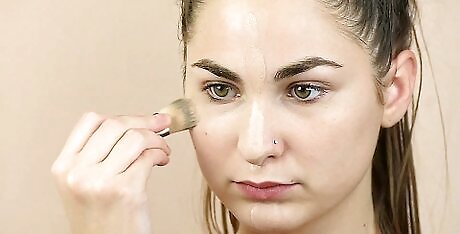
Smooth the foundation down the sides of your nose and towards the sides of your face. You want the foundation to get thinner as you get closer to the sides of your face. If it gets too thin on your cheeks and you want more coverage, dab more foundation onto your cheekbones and blend it outwards.
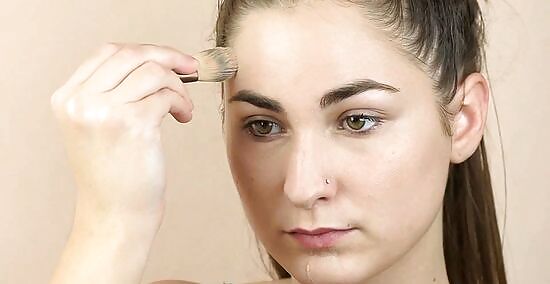
Spread the foundation across your forehead. Brush the foundation up towards your hairline. Then, brush it to the left and right above your eyebrows.
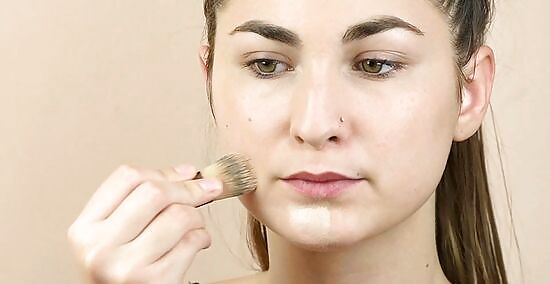
Spread the foundation down your chin and along your jaw line. Use your brush, fingers, or sponge to pull the foundation down towards your chin. Then, spread it sideways along your jaw.
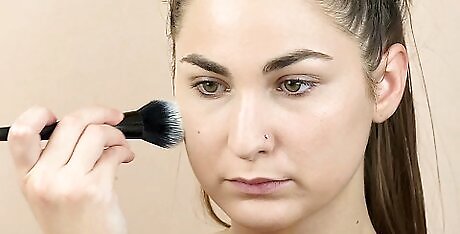
Blend the foundation using a foam sponge or a brush. Always blend from the center outward. You want the foundation to fade the closer it gets to your hairline and the sides of your face. This will create the smoothest transition and prevent any harsh lines.
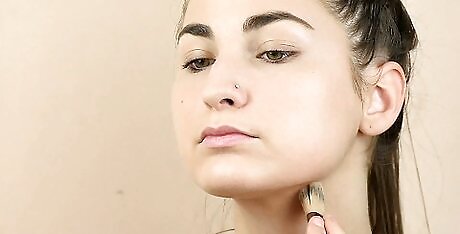
Consider applying foundation to your neck. This is great for those who have dull or grayish skin on their necks.
Applying Concealer and Powder
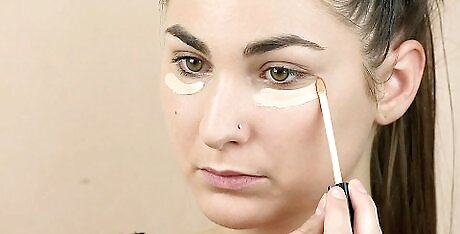
Apply some concealer. Use a brush or your fingers to tap it onto the area that needs to be concealed. Then, blend it into the foundation using light, feathery strokes. Always blend outward, away from the center of the concealer spot. If you are applying concealer under your eyes, use your ring finger. This is the weakest finger on your hand, and thus the gentlest. Applying concealer after foundation makes it easier to blend in. It also lessens the chances of the foundation getting wiped off.
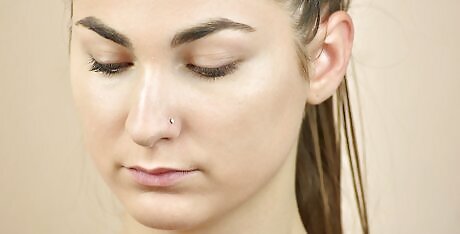
Let the foundation dry. This can take anywhere from 1 to 5 minutes. Some foundations, such as cream, are oil-based and will never fully dry. Other foundations, such as powder, are already dry to begin with.
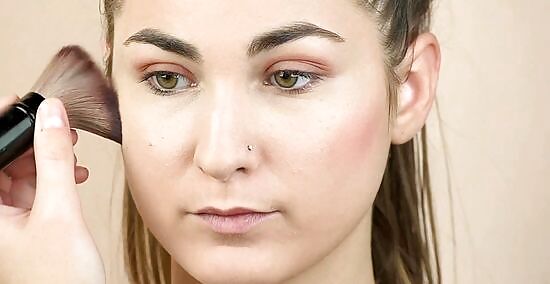
Consider doing the rest of your makeup. At the point, you can apply the rest of your makeup, including your lipstick, blush, and eye makeup.
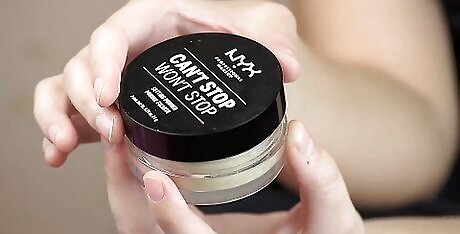
Open up your powder case. You can use a powder foundation or a setting powder. Both will help give your skin a smoother finish and get rid of shine. They will also help soak up any excess oils.
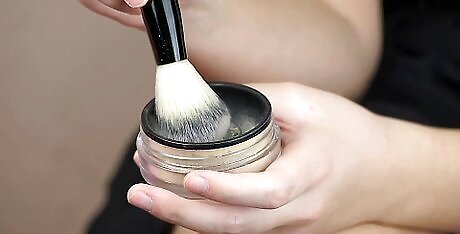
Swirl a powder brush into the powder. Most powder will be compact or pressed. If you are using a loose powder, simply dip the brush into the powder.
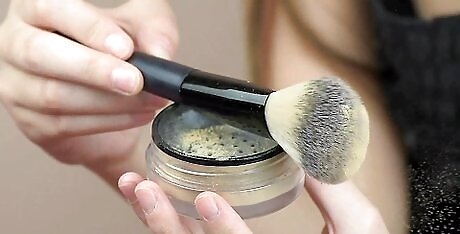
Gently puff on the brush to get rid of any excess powder. You can also tap the brush handle against the counter edge. This will keep you from applying too much powder at one time, which can result in a cake-y look. You can always apply more powder later.
Dust the powder onto your face. Start from the middle or your face and brush outward. If needed, dip your brush into the powder and keep dusting your face. Always tap off the excess powder before you touch the brush to your face. Don't use oil controlling or mattifying powder under your eyes, or it will absorb all of the moisture there. This will make your delicate eye area look more wrinkly and dry.
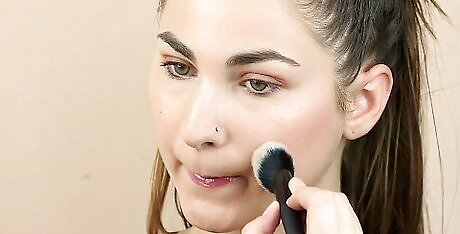
Use a clean brush to dust off any excess powder. Look carefully into the mirror. If you see any excess powder, take a clean brush and lightly dust it off.
Choosing Your Foundation, Powder, and Tools
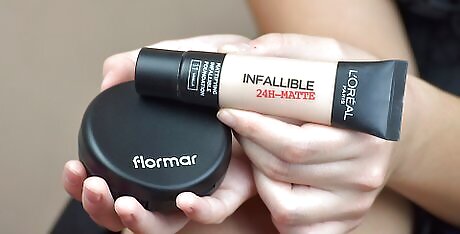
Choose a foundation. There are many different types of foundation. Some are better for certain skin types than others. The main three are: powder, liquid, and cream. Here's what you need to know based on your skin type: If you have dry skin, go for a moisturizing liquid or cream foundation. Avoid using powder foundation. It will make your skin appear even more dry. If you must use a powder foundation, choose a hydrating one. If you have oily skin, choose a lightweight, oil-free liquid or powder foundation - like mousse. You can also use mineral-based powder foundation; it will absorb the oil better. Don't use cream foundation. It will be too heavy and oily for your skin. If you have normal skin, you can use any type of foundation you want: powder, liquid, or cream. If you have combination skin, consider using a powder foundation. Use more on the oily parts, and less on the dry parts.
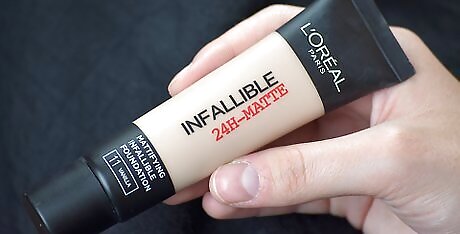
Choose your foundation finish. There are also different types of foundation finishes. Some are more sheer while others are more matte. Here's what you need to know: Use a semi-matte foundation if you want a natural look. Most foundations are semi-matte. Use a dewy or illuminizing finish if you want to give your skin a healthy glow. This is great for the cold, winter months. Use a matte or flat finish if you want your face to look smooth. This is great for pictures. It will also get rid of shine.
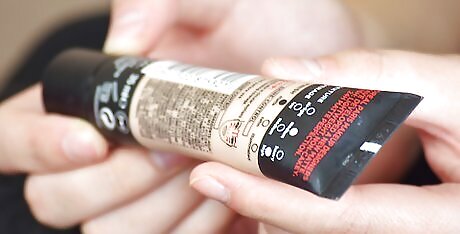
Choose your foundation coverage. Some foundations are sheer and light, while others are thick and heavy. Use a sheer foundation if you want to just even out your skin tone, but still let your natural features (such as freckles and beauty marks) show. Use a full coverage foundation if you want to cover freckles, dark spots, and other blemishes. Keep in mind that for things like pimples, you might also need to use a concealer.
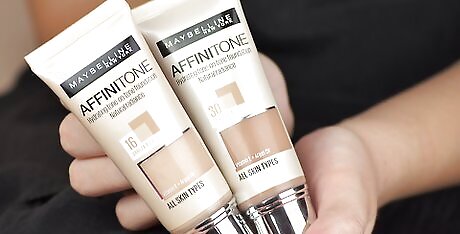
Plan on having at least two different shades. You skin will be lighter during the winter months when there is less sunlight. It will be darker in the summer when the sun is brighter. As such, the foundation you use in the winter may be too light for your skin during the summer, and the foundation you use in the summer will be too dark for you in the winter. To avoid these problems, get a darker shade to use during the summer, and a lighter shade to use during the winter. You can mix the two shades as your skin tone lightens or darkens during the spring and fall.

Know that foundation oxidizes as it dries. When shopping for foundation, choose a few shades that you think match your skin tone. Apply each one along your cheek. Wait one to two minutes before looking at the foundation again. Choose the color that blends into your skin the best.
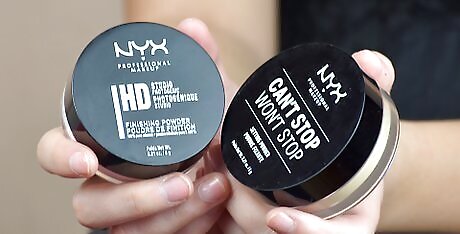
Choose your powder. You can use powder foundation to soak up any excess oil or shine. You can also use a setting powder to set your makeup and keep it from moving around.
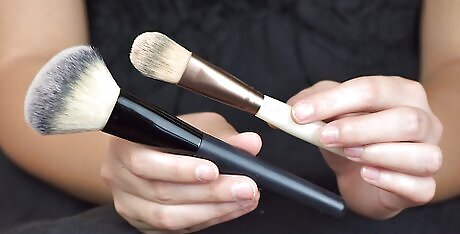
Choose your tools based on your foundation type and desired coverage. The type of foundation you use will determine what you use to apply it. Here is what you need to know: Use a fluffy powder brush to apply powder foundation. This will work on both pressed and loose powder. You can also use this brush to apply setting powder when you are done doing your makeup. Use a foam makeup sponge to apply pressed powder foundation, liquid foundation, or cream foundation. They are usually white, and come in wedge or disk shapes. They will give you the smoothest, most even coverage. Use a foundation brush to apply liquid or cream foundation. They are made with slightly stiffer bristles than a powder brush. They are flat and have a slightly rounded tip. They will give you the most coverage. Use your fingers to apply liquid foundation if you are in a hurry. This won't give you the best coverage or the smoothest finish, however.

















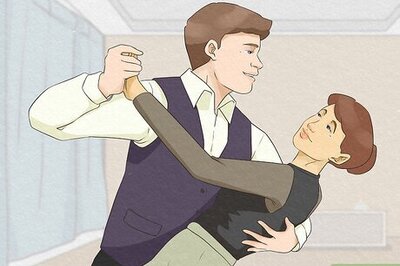
Comments
0 comment